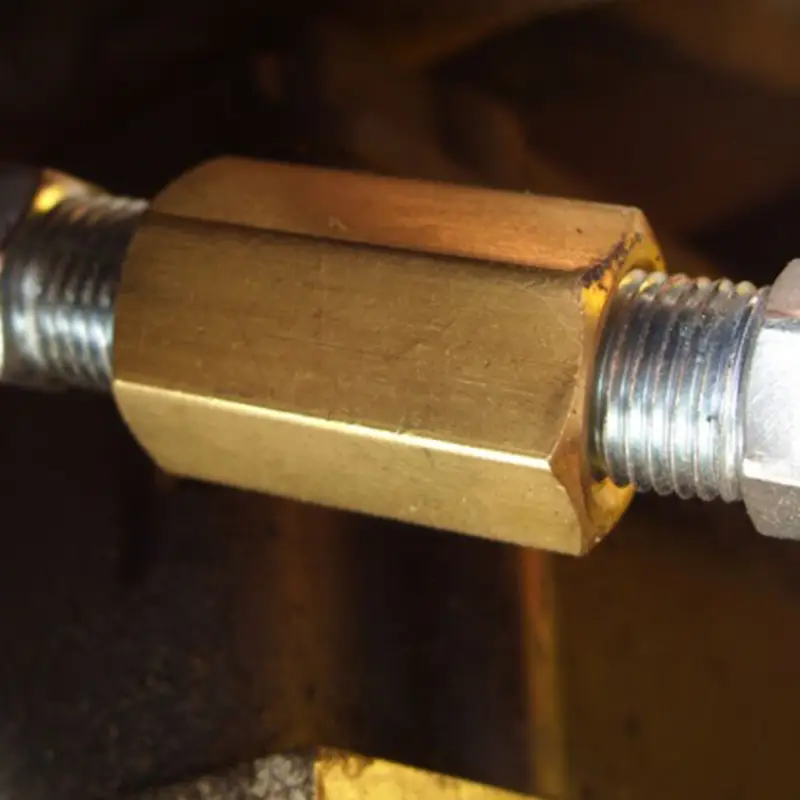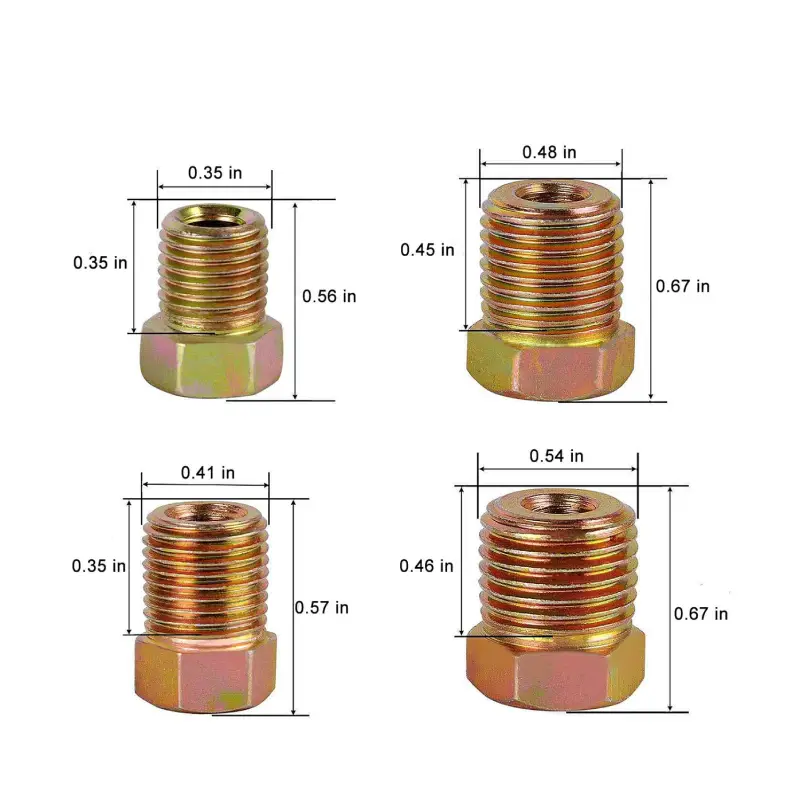Brake line fittings are essential components in any vehicle’s braking system, ensuring a secure and leak-free connection between brake lines and other hydraulic components. Selecting the right fittings is crucial for maintaining optimal braking performance and safety. With numerous types and sizes available, understanding their differences is vital.
This guide explores the various types of brake line fittings, their applications, and the factors to consider when choosing the best options for your vehicle. We’ll delve into the specifics of each fitting type, helping you make informed decisions to ensure your braking system’s reliability and longevity.
What Are Brake Line Fittings
Brake line fittings are the unsung heroes of your vehicle’s braking system. They’re the small, but absolutely vital, connectors that link the brake lines to various components like the master cylinder, calipers, and wheel cylinders. Think of them as the communication network of your brakes, ensuring that the hydraulic pressure generated when you press the pedal is efficiently transferred to where it’s needed to stop your car. Without these fittings, your brake lines would be useless, and your car would be a rolling hazard.
These brake line fittings aren’t just any old connectors, though. They’re designed to withstand the high pressures and corrosive fluids that are common in braking systems. That’s why they’re typically made from durable materials like steel, brass, or stainless steel. Each type of fitting has its own specific design and thread pattern, tailored to ensure a leak-free and secure connection. Choosing the right fitting is essential for maintaining the integrity and safety of your braking system.
Types of Brake Line Fittings
Brake line fittings are essential components in any vehicle’s braking system, ensuring a secure and leak-free connection between brake lines and other components. Selecting the correct type is crucial for optimal performance and safety.
Here are the different types of brake line fittings.
Inverted Flare Brake Line Fittings
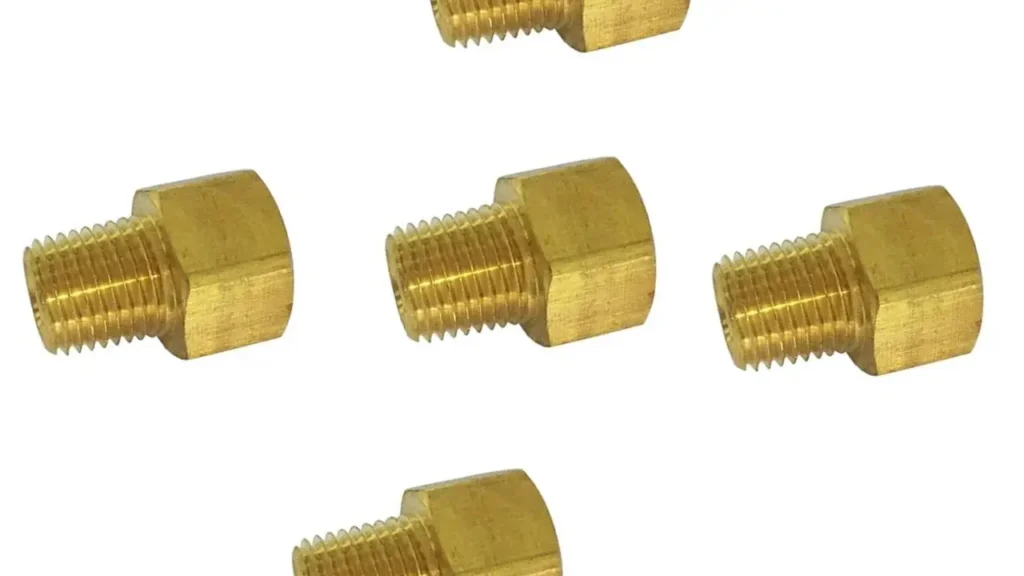
Inverted flare brake line fittings are a common choice in automotive braking systems, known for their robust and leak-resistant connections. These fittings feature a double flare, creating a 45-degree inward flare on the end of the brake line. This design provides a strong, metal-to-metal seal, capable of withstanding high pressures and vibrations. The inverted flare design ensures a tight fit, minimizing the risk of leaks and ensuring reliable brake performance.
- Features: Double flare design, 45-degree inward flare, metal-to-metal seal.
- Benefits: High-pressure resistance, leak-free connections, robust and durable.
- Applications: Automotive braking systems, high-pressure hydraulic applications, heavy-duty vehicles.
These fittings are widely used in automotive applications due to their reliability and durability. The double flare design ensures a secure connection, even under extreme conditions. Their ability to handle high pressures makes them suitable for both standard and performance vehicles. Inverted flare fittings are also commonly used in industrial hydraulic systems where leak-free connections are critical for safety and efficiency.
Bubble Flare Brake Line Fittings
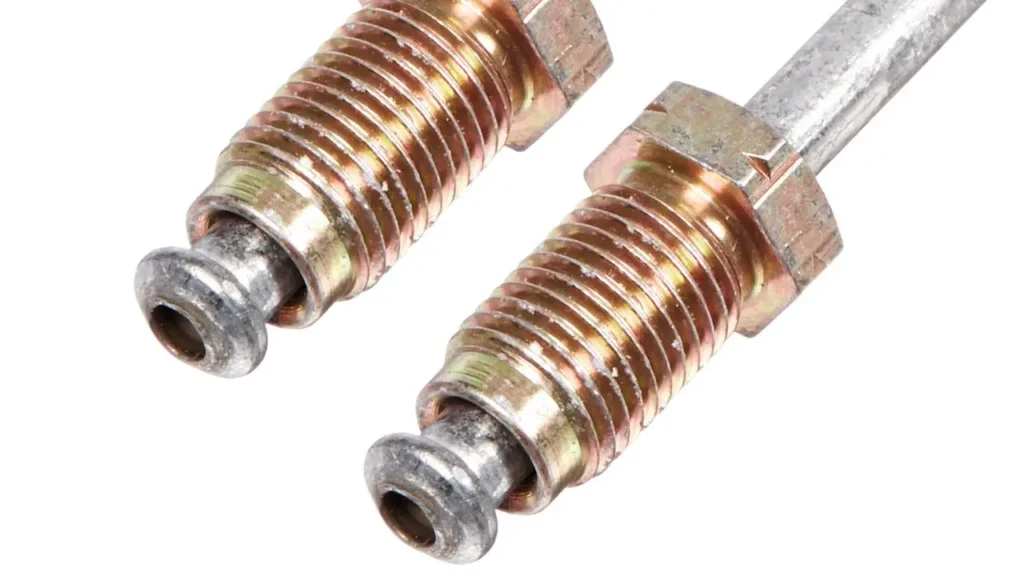
Bubble flare brake line fittings are another type of fitting used in automotive braking systems, particularly in European and some Asian vehicles. Unlike inverted flares, bubble flares create a single, outward flare on the end of the brake line. This design provides a reliable seal, though it may not be as robust as an inverted flare in high-pressure applications. Bubble flare fittings are known for their ease of installation and are often used in systems where frequent maintenance is required.
- Features: Single outward flare, easy installation, reliable seal.
- Benefits: Simplified installation, suitable for frequent maintenance, cost-effective.
- Applications: European and Asian vehicles, lower-pressure brake systems, maintenance-friendly applications.
Bubble flare fittings are popular in European and some Asian vehicles due to their ease of use and cost-effectiveness. The single flare design simplifies installation, making them ideal for DIY repairs and maintenance. While not as robust as inverted flares, they provide a reliable seal in lower-pressure brake systems. Their ease of installation makes them a preferred choice for applications where frequent maintenance or component changes are necessary.
Compression Brake Line Fittings
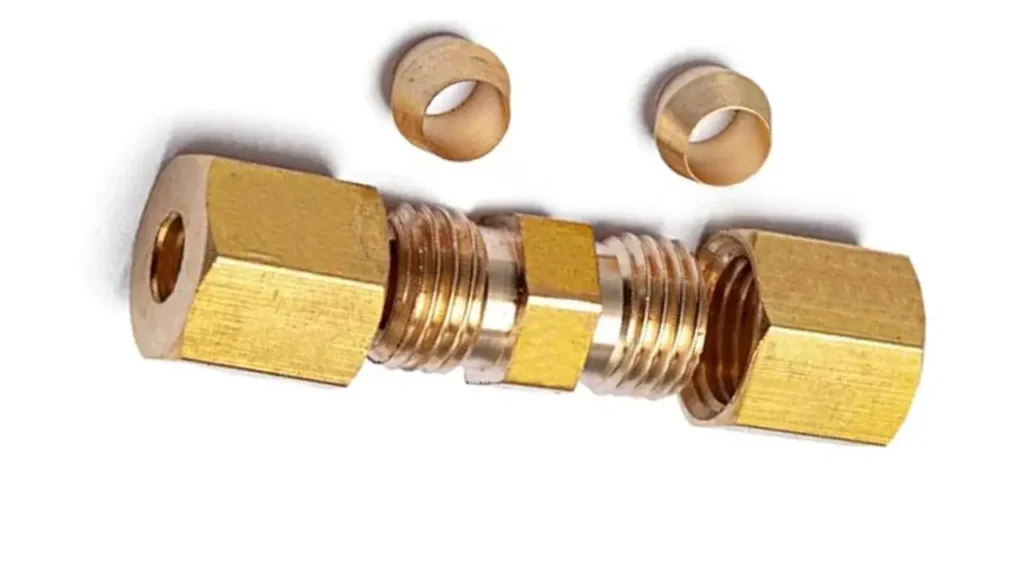
Compression brake line fittings offer a unique connection method, using a compression nut and sleeve to secure the brake line. These fittings do not require flaring, making them a convenient option for quick repairs and temporary connections. The compression sleeve compresses onto the brake line, creating a seal. While convenient, compression fittings are generally not recommended for high-pressure braking systems due to their potential for leaks under extreme conditions.
- Features: Compression nut and sleeve, no flaring required, quick repairs.
- Benefits: Easy installation, temporary connections, convenient for emergency repairs.
- Applications: Emergency repairs, low-pressure brake systems, temporary connections.
Compression fittings are ideal for emergency repairs and temporary connections due to their ease of installation. They eliminate the need for specialized flaring tools, making them a convenient option for DIY repairs. However, they are generally not recommended for high-pressure braking systems due to their potential for leaks. Compression fittings are best suited for low-pressure applications where quick and easy connections are essential.
Here’s a chart summarizing the key differences between the types of brake line fittings:
Types of Brake Line Fittings
| Feature | Inverted Flare Brake Line Fittings | Bubble Flare Brake Line Fittings | Compression Brake Line Fittings |
| Flare Type | Double, 45-degree inward | Single, outward | None (compression) |
| Sealing Method | Metal-to-metal | Metal-to-metal | Compression sleeve |
| Pressure Rating | High | Medium | Low (generally not recommended for high-pressure) |
| Installation | Requires flaring tool | Requires flaring tool | No flaring required |
| Durability | High | Medium | Lower |
| Common Use | Automotive, high-pressure | European/Asian vehicles | Emergency repairs, low-pressure |
| Pros | Robust, leak-resistant | Easier installation | Quick, convenient |
| Cons | More complex installation | Less robust than inverted flare | Potential for leaks under high pressure |
How to Choose the Best Brake Line Fittings
Choosing the right brake line fittings is crucial for your vehicle’s safety and performance. You need fittings that can withstand high pressures and prevent leaks, ensuring your braking system functions reliably. Consider factors like the type of flare, material, and connection method to make an informed decision. Don’t compromise on quality; select fittings that meet or exceed industry standards for optimal performance and safety.
When selecting brake line fittings, pay close attention to the specific requirements of your vehicle and braking system. If you often drive in harsh environments or require high-performance braking, opt for fittings made from durable materials like stainless steel. Ensure the fittings are compatible with your brake lines and other components, and always prioritize fittings from reputable manufacturers to guarantee quality and reliability.
Material:
You should select fittings crafted from corrosion-resistant materials like stainless steel or brass. These materials ensure longevity and prevent degradation, especially in harsh environments. This is important to ensure your braking system is reliable.
Flare Type:
Consider the flare type required for your vehicle. Inverted flares provide a robust, leak-free seal for high-pressure systems, while bubble flares are suitable for lower-pressure applications. Understanding your vehicle’s specifications is key to selecting the correct flare type.
Connection Method:
Choose a connection method that matches your skill level and the application. Compression fittings offer easy installation for quick repairs, but flared fittings provide a more secure, long-term solution. When choosing, consider the tools and experience you have.
Pressure Rating:
It is very important to ensure the fittings you select can handle the maximum pressure your brake system will generate. High pressure fittings, will ensure the safety of you, and others on the road.
Conclusion
In conclusion, selecting the right brake line fittings is crucial for ensuring safe and efficient braking systems. Understanding the various types, materials, and connection methods allows you to make informed decisions based on your specific application and requirements. Proper fitting selection prevents leaks and maintains optimal brake performance.
The right fitting type depends on factors like pressure requirements, corrosion resistance, and ease of installation. Materials such as stainless steel and brass offer durability and longevity, while different connection methods cater to varying levels of expertise and system complexities. Regular inspections and maintenance further contribute to the system’s reliability.
For high-quality wholesale brake line fittings tailored to your specific needs, request a quote from DF Hydraulics today. We offer a comprehensive range of durable and reliable fittings, ensuring secure and efficient brake line connections. Get in touch to discuss your requirements and benefit from our expert services.

